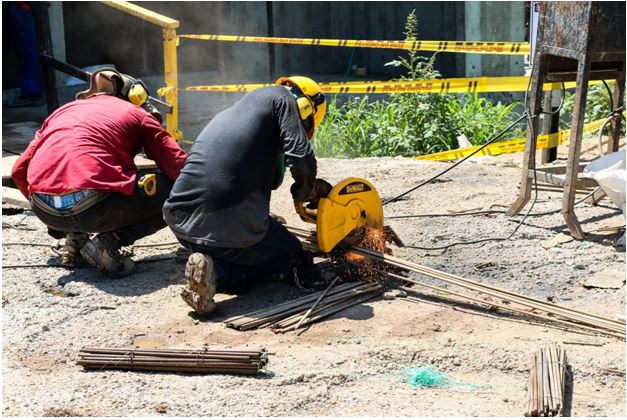So you’re not sure where to start when it comes to implementing a workplace safety policy at your company? Building a successful health and safety program for the first time is a huge endeavor, so it’s critical to obtain some perspective and knowledge of the fundamental criteria and obstacles you’ll likely experience along the road, which is why we’ve written this blog article to assist you!
1. Make a promise to yourself to be safe
Include safety in your company’s mission statement, and have management help create safety targets. These objectives should be written down so that they may be measured and improved.
This adjustment will assist in establishing a safety culture and keeping safety at the forefront of the organization’s thoughts.
2. Research the regulations that apply to your sector
Examine the information provided by OSHA and speak with other industry specialists.
Even if it’s simply a safety manager from another firm like yours, it might sometimes be beneficial to bring in an outside expert for your sector.
Make a list of the needs and suggestions so you can track whether or not they are met.
3. Identify potential dangers and risks
Anything that has the potential to hurt others should be dealt with.
To determine the ideal locations to execute improvements, talk to your staff and examine your own workplace.
Pay attention to workplace dangers including shop layout, environmental hazards like dust, hazardous behaviors like utilizing machinery, and your company’s present culture.
These should be documented with the things from Step 2 so that they may be handled in the future.
All this and much more about confined space training, you can learn and find out with experienced Zokal Safety Australia.
4. Establish procedures and programs
These procedures and activities should be adjusted to the needs and challenges identified in Steps 2 and 3.
They should also make management and employees accountable for their actions in terms of safety.
It’s better if they’re written down and available to staff, and some even need one.
The following requirements necessitate the creation of a documented program:
- Program for Hazard Communication.
- Lockout/Tagout Procedures (energy control procedures).
The Respiratory Protection Program (RPP) is a program that protects your lungs against
- Personal Safety Equipment (PPE) (hazard assessment).
- Post-exposure plan for bloodborne pathogens.
- Preparedness plans in the event of an emergency.
- Confined Spaces that require a permit.
- Electrical safety is important.
- A fire-prevention strategy.
- Program for Hearing Conservation.
- Excavation and Trenching Safety
These applications are simple to handle using tools like those supplied by BasicSafe.
5. Educate your employees
Cover the papers from Step 4 as well as any other pertinent material.
- New hires
- Individuals who have recently transferred or changed assignments
- Any time a new process, chemical, or piece of equipment is introduced
- Any time new dangers are discovered • Any time refresher training is needed or mandated by regulations
Try to make the training interesting and log all of the training that takes place using spreadsheets other EHS-specific training tools.
6. Inquire about all accidents and events and keep note of them
Regardless matter the severity, this will assist you in preventing future instances.
Determine the root cause, identify potential modifications, and implement and track remedial and preventative actions.
This may need making adjustments to previously created papers and training.
7. Double-check your plan
Every year, go through your training, procedures, and any written safety paperwork you have to see if there are any flaws in your program and how you can fix them.
Follow the same steps as before, but on a smaller size.
It pays to have a solid auditing tool at this time to go through every area of your safety program.
At this point, having a robust auditing tool to go through every component of your safety program is advantageous.
8. Set up an environmental, health, and safety management system
Procedures, manuals, training, audits, incidents, and other tools should all be available in a decent software package.
This will simplify your life and save your firm a lot of time and money when it comes to safety.
Don’t feel terrible if you’re feeling a little overwhelmed and perplexed right now; you’re not alone, especially if you own or work for a small Teckyleak business. Small businesses are the most vulnerable since they virtually never have the time, money, resources, or internal knowledge to handle all of the intricate requirements of OSHA compliance.
